Snakes, as scary as they may seem, are usually more interested in hiding from humans than biting them. These slithering serpents live all over the United States, although the vast majority of the time, they are hidden from sight. Well, in one place in Illinois, the snakes come out of hiding twice a year in a mass migration event! Today, we will learn all about the venomous snakes that close down a three-mile road in Illinois.
The Shawnee National Forest Snake Migration
Although the words “snake migration” may sound terrifying to some, the Shawnee National Forest snake migration is one of the coolest biological events that happen in the country. During this period of time, thousands of snakes migrate across a single stretch of road in order to find safety on the other side. Due to the protected nature of many of the snakes, the road, now dubbed Snake Road, began closing each year in order to reduce accidental vehicle incidents.
This migration happens twice a year, once between March 15 and May 15th, and again from September 1st to October 30th. When the migration is in swing, Snake Road closes, making it one of the most unique events in the world. In fact, Snake Road is the only road closed every year for the migration of snakes and other reptiles.
Is It Normal for Snakes to Migrate?
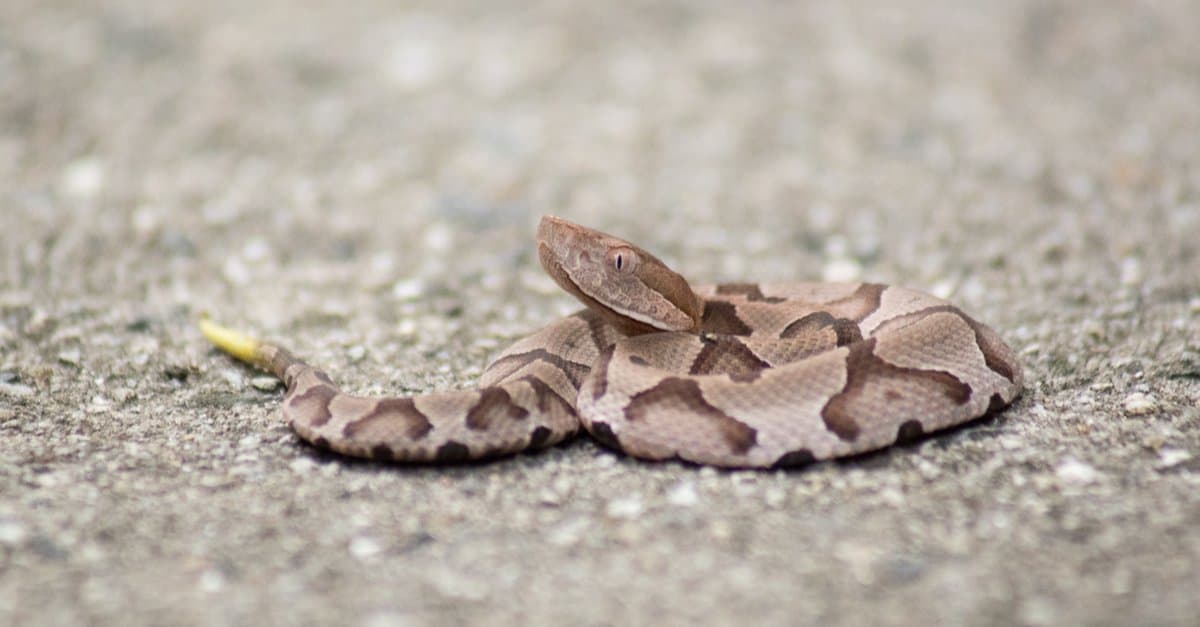
Copperheads migrate to reach dens for overwintering.
©woodphotography LLC/Shutterstock.com
Snakes don’t migrate hundreds of miles like birds – but they do, indeed, migrate to reach dens for overwintering. Cold-blooded snakes are dependent on external sources of heat – so they can’t survive cold weather unless they find a safe space to hibernate until spring. If you’ve seen a snake crossing the road in spring or fall – they are most likely migrating. Seldom do you find a situation perfect for a mass snake migration like the amazing Snake Road event.
Why Do the Snakes Migrate across This Specific Road Each Year?
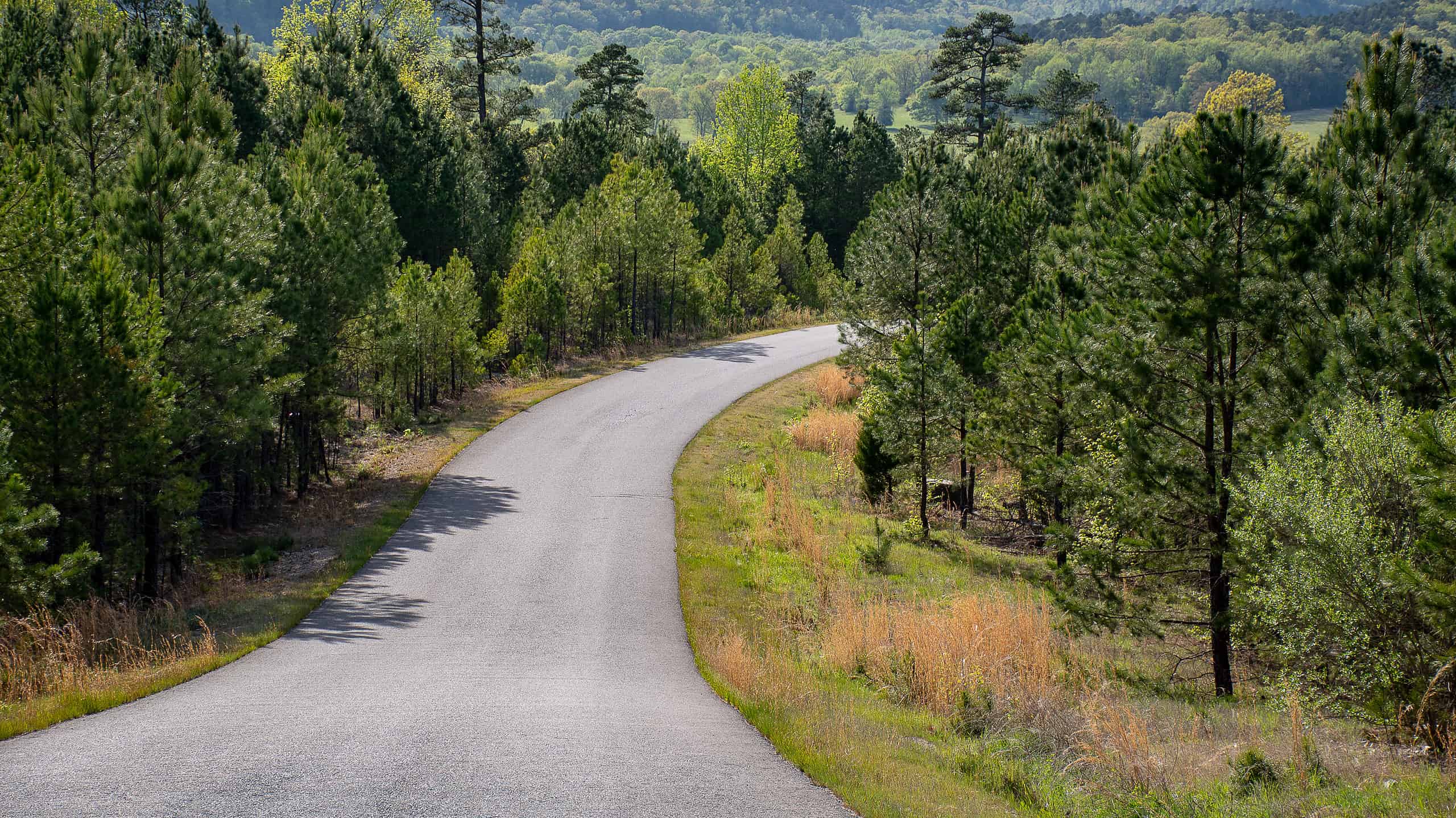
The Ozark Mountains ecosystem is home to the LaRue Pine Hills and the LaRue Swamp.
©Karyn Honor/Shutterstock.com
What makes Snake Road so special isn’t the road itself, but what it bisects. Snake Road is between two important geological regions, the LaRue Pine Hills and the LaRue Swamp.
The LaRue-Pine Hills are on the east side of the road. The LaRue-Pine Hills are famous for their majestic bluffs towering 46 meters (150 feet) straight into the air. They form the easternmost point of the Ozark Mountain ecosystem.
Nat Geo
The LaRue Pine Hills are home to large, towering limestone bluffs that make up the easternmost point of the Ozark Mountain chain. These limestone structures have deep crevasses and holes that make the perfect wintering ground for snakes during the colder seasons. On the other side of the road is the LaRue Swamp. LaRue Swamp is one of the largest swamps in the region and the preferred location for many of the state’s most important snakes and reptiles. When winter months are near, the snakes and reptiles cross the road in order to reach the limestone caverns, and when it warms up they head back to the swamps!
Why Is the Road Closed Each Year?
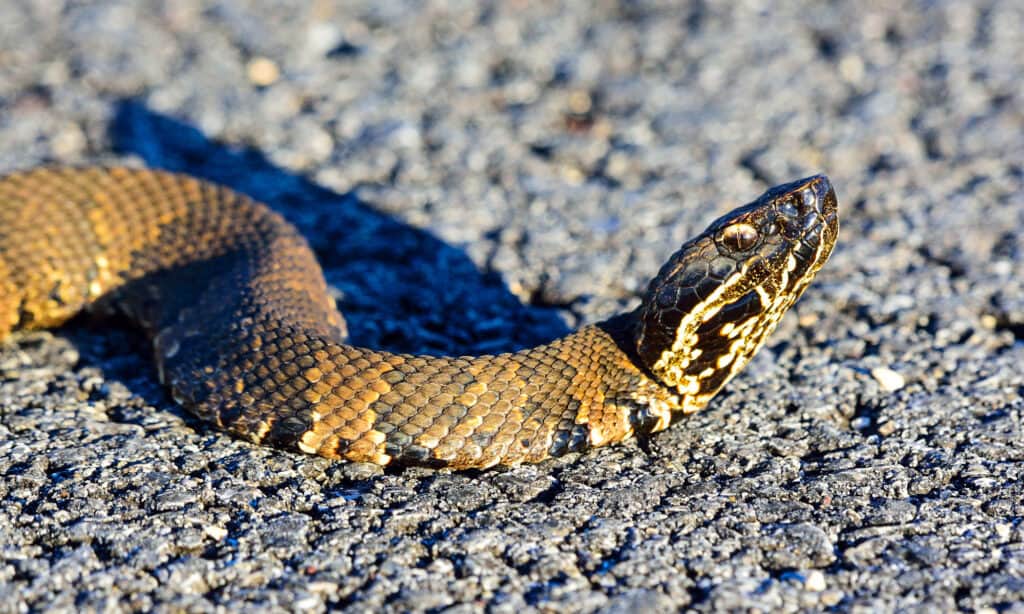
Millions of snakes have been killed by automobiles in the United States.
©Ad Konings/Shutterstock.com
In 1972, research into the region showed that thousands of reptiles were dying while trying to navigate the road. In fact, some research shows that up to 25% of all snakes will be killed by cars in the United States. The data showed that closing the road for a few weeks would ensure the safe passage of millions of reptiles during the migration.
It is estimated that tens to hundreds of millions of snakes have been killed by automobiles in the United States.
In 1972, the Forest Service made the decision to close LaRue Road for three weeks in the spring and three weeks in the fall in order for the snakes to migrate safely.
Nat Geo
Later data gathered by Scott Ballard, a District Heritage biologist, would show that the 3-week gap wasn’t quite long enough for the reptiles to cross. Using his data, he was able to have the road closure extended for a few extra weeks, thereby increasing the number of snakes that could successfully make the journey.
Incredibly, there was some pushback from the locals when the closures went into place. Here’s why:
“There was a lot of resistance from the locals at first,” explained Ballard. “It used to be sport around here to see how many snakes you could run over with your car.”
Nat Geo
The Most Common Venomous Snakes to Cross the Road Each Year
There are three types of venomous snakes that live in the region:
- Copperheads
- Cottonmouths
- Timber Rattlesnakes
Copperheads
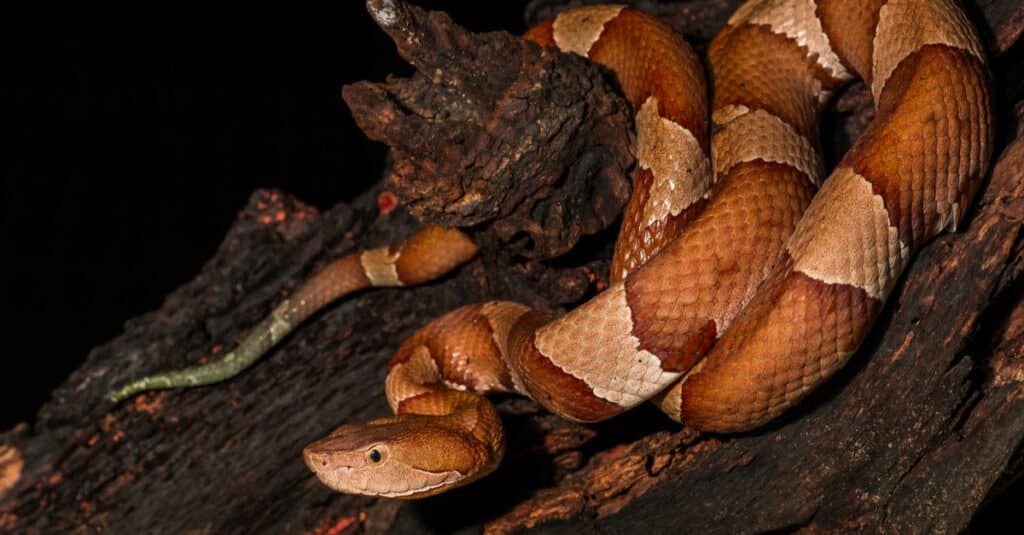
The copperhead is responsible for the most venomous bites reported of any snake in the United States.
©Wildvet/Shutterstock.com
Copperheads are generally recognized as the most common venomous snakes wherever they can be found, although they are the least dangerous of them all. Thankfully that’s the case because they are also the snake that most often bites humans! Their camouflage and motionless defense mechanism often work too well, as humans will either step on them or reach near them only to find they have been bitten. Copperhead bites are rarely, if ever, fatal nowadays.
Cottonmouths

The cottonmouth is an aquatic snake with a bright white mouth.
©iStock.com/Saddako
Cottonmouths are aquatic snakes that get their names from their bright white mouths. When threatened, they will curl up and flash their mouth, hoping to scare predators away. Most of the time, it works! In some situations, however, humans will accidentally step on them or try and handle these venomous creatures and are bitten. Cottonmouths are more venomous than copperheads but still aren’t very deadly.
Timber Rattlesnakes
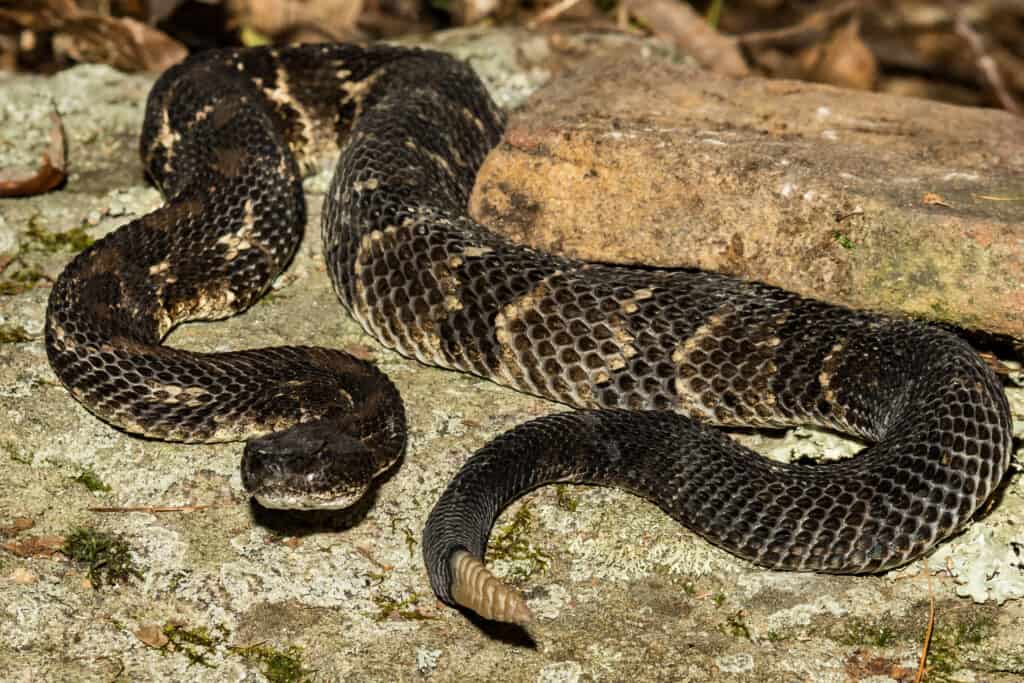
Black-phase timber rattlesnakes have dark speckles all over their bodies that make them look much darker.
©iStock.com/JasonOndreicka
The most venomous snakes in the region are timber rattlesnakes. Timber rattlesnakes are related to the copperhead and cottonmouth (they are all pit vipers), but they are by far the most venomous of the three. Thankfully, these snakes do their best to avoid humans and even give an audible warning with their rattles when they feel threatened (courtesy of their rattles). Timber rattlesnakes aren’t all that common as they only breed every three years and produce a litter of 10 snakes, of which only 5 will make it to adulthood.
Nonvenomous Snakes
There are many types of nonvenomous snakes in Illinois, especially in the LaRue region. The most common include:
- Earth snakes
- Rough Green snakes
- Garter snakes
- Water snakes (multiple species)

Rough green snakes are among the nonvenomous reptiles that can be found in the LaRue region in Illinois.
©iStock.com/Shoemcfly
Although these snakes are quite numerous, they play an important role in the ecosystems. In fact, snakes eat millions of pounds of mice and rats each year, keeping humans from being overrun by pests that often carry diseases.
Other Dangerous Creatures Found in Illinois
Snakes aren’t the only dangerous creatures that you will encounter in this state. The black widow spider, known for its distinctive black body and the reddish-to-yellow hourglass marking its abdomen, is considered one of the top deadliest spiders in the world. This arachnid is responsible for sending more than 2,500 people to poison control centers each year. They like to nest in numerous locations that are dark and hidden, like garages, woodpiles, sheds, or burrows.
The black widow bite feels like a pinprick and may cause severe muscle pain and cramping. It is believed that a bite is fatal to small children and elderly adults, although there have been no deaths attributed to this spider in the U.S.
Where Is the Shawnee National Forest Located on a Map?
Shawnee National Forest is situated in the southern part of Illinois, between the Mississippi and Ohio rivers. It comprises forests, hills, and lakes and is home to a variety of wildlife such as bald eagles. Within the forest, there is a wilderness area called the Garden of the Gods, which is known for its sandstone cliffs and formations that have been around for a long time.
There are also several trails to explore, including the River to River Trail, which is quite lengthy, and the Rim Rock National Recreation Trail, which circles an escarpment.
Here is the Shawnee National Forest on a map:
The photo featured at the top of this post is © A. D. Shortliffe/Shutterstock.com
Discover the "Monster" Snake 5X Bigger than an Anaconda
Every day A-Z Animals sends out some of the most incredible facts in the world from our free newsletter. Want to discover the 10 most beautiful snakes in the world, a "snake island" where you're never more than 3 feet from danger, or a "monster" snake 5X larger than an anaconda? Then sign up right now and you'll start receiving our daily newsletter absolutely free.
Thank you for reading! Have some feedback for us? Contact the AZ Animals editorial team.






